With lambing and calving under way on many farms, it’s only a matter of time before ATVs will back working in the fields again.
With many farmers relying heavily on these machines, it’s important that they receive a good run through before the heavy work resumes. We offer some practical maintenance advice to ensure your ATV remains in good working order.
The first thing operators should do is contact your dealer to double check the service interval, what filters, oil, and at what quantities, etc, are required to service your specific make and model.
Although some of the tasks mentioned below are relatively straightforward, it may often be easier to get a local trained dealer to carry out some repairs, particularly the tricky ones.
General condition
The general condition of an ATV will tell you a lot about it and how it was maintained. Try and maintain your machine cosmetically to a good standard as this plays a key role in resale value.
Start by giving it a good wash, which will expose the service points and allow you to check for any obvious issues such as corrosion, cracks or strains.
From a safety perspective, the side steps, engine covers and mudguards should be kept in good order.
On many models, these panels are held together with plastic clips or plugs that can break over time.
Replacement clips are inexpensive and should be replaced before the panels fall off altogether. Certain spare parts on older machines are becoming hard to source and discontinued, in some cases, so try to source parts instead of leaving it on the long finger.
Engine
In this piece, we focus on a Honda Foreman, but many of the tips are applicable to lots of models. The general rule of thumb for engine oil and filter replacement on ATVs is every 100 hours. Before doing so, it’s advised to run the engine for a few minutes. This is because oils become less viscous at working temperature and therefore drain better.
Once drained, replace the oil filter and seal, but first lightly rub the new seal with oil to ensure the filter housing seals properly.
The aluminium bung on the bottom of the sump should be tightened back into place once all oil has drained, taking extra care not to over tighten as ATV sumps tend to be aluminium, meaning the threads can be easily stripped.
Fill the engine to the correct level using the recommended oil. The majority of modern ATVs use 10W-40 but, to be sure, consult with your dealer first. Once the service is complete, the quad should be run for a number of minutes and its oil level checked again when cool.
Depending on its condition, the air filter should be either blown out or replaced at every service. Good air flow is essential for optimum engine performance and fuel efficiency.
A petrol engine that is getting hard to start could be often one of two things, a worn-out spark plug or an exhausted starter motor. Other symptoms of worn spark plugs include loss of power, engine misfire and increased fuel usage.
Transmission
As part of the service, the front and rear differential oil levels should also be checked every 100 hours. If the oil appears to be milky or black it needs to be replaced. Typically, the front differential oil will be in better condition than the rear, depending on how much time the quad spends in 4WD.
Each differential has a fill and drain bung. Oil should be up to the level of the fill bung on the front differential but not the back.
The rear differential has a separate check bolt (lower down than the fill bung) which should be opened to check the oil level.
Steering and suspension
Steering linkage components are a wearing part, and will need to be replaced over time.
Check the handle bars for play. Ideally, the steering should not move without response from the front wheels.
A little (5mm) play is acceptable but excessive play would indicate possible wear in ball joints, track rod ends or wheel bearings. Wheel bearings can be checked by rocking each wheel. Over time, a worn wheel bearing can result in costly hub damage.
Check the bearing condition in each swingarm and that linkages and pivots are not damaged
Clicking or cracking sounds of the machine on the go will indicate worn CV joints.
The condition of both the front and rear shocks should be checked. ATVs fitted with independent suspension will naturally have a lot more moving parts. Check the bearing condition in each swingarm and that linkages and pivots are not damaged.
Check the suspension, that it returns to its normal position once compressed. Replacement shocks can cost in the region of €150.
ATVs fitted with independent suspension will naturally have more moving parts, check bearing condition in each swingarm and the linkages and pivots.
Brakes
Most farm quads are fitted with hydraulic brakes up front and cable drum brakes on the rear, although more and more
ATVs are coming fitted with discs all round.
Each type has an individual service procedure. It’s a good idea to remove the front wheels and examine brake pad and disc condition. Although pads and discs should last a long time, they still wear and need to be inspected.
Wear on brakes depends on use. The footbrake can seize from a lack of use. This usually involves replacing the complete brake cable. Rear drum brakes can be adjusted using the two rear hub-mounted thumbscrews, one for the handbrake and the other for the footbrake. These will need slight adjusting as brake shoes wear.
Tyre condition should be assessed and they should be replaced if needs be.
Correct tyre pressure is essential. Varying pressure can hugely change the quad’s handling.
New tyres will set you back from €80 to €110 including VAT depending on brand and size.
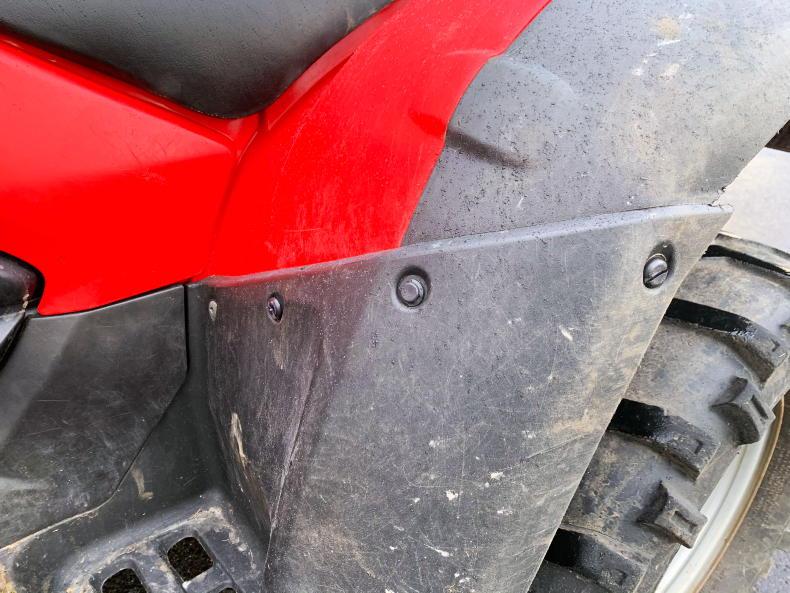
The side steps, engine covers and mudguards should be kept in good order.
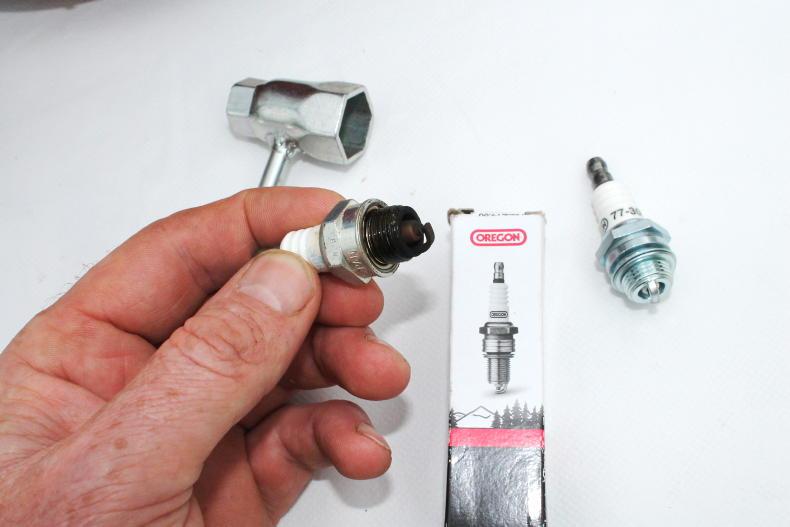
Symptoms of worn spark plugs include loss of power, engine misfire and increased fuel usage.
With lambing and calving under way on many farms, it’s only a matter of time before ATVs will back working in the fields again.
With many farmers relying heavily on these machines, it’s important that they receive a good run through before the heavy work resumes. We offer some practical maintenance advice to ensure your ATV remains in good working order.
The first thing operators should do is contact your dealer to double check the service interval, what filters, oil, and at what quantities, etc, are required to service your specific make and model.
Although some of the tasks mentioned below are relatively straightforward, it may often be easier to get a local trained dealer to carry out some repairs, particularly the tricky ones.
General condition
The general condition of an ATV will tell you a lot about it and how it was maintained. Try and maintain your machine cosmetically to a good standard as this plays a key role in resale value.
Start by giving it a good wash, which will expose the service points and allow you to check for any obvious issues such as corrosion, cracks or strains.
From a safety perspective, the side steps, engine covers and mudguards should be kept in good order.
On many models, these panels are held together with plastic clips or plugs that can break over time.
Replacement clips are inexpensive and should be replaced before the panels fall off altogether. Certain spare parts on older machines are becoming hard to source and discontinued, in some cases, so try to source parts instead of leaving it on the long finger.
Engine
In this piece, we focus on a Honda Foreman, but many of the tips are applicable to lots of models. The general rule of thumb for engine oil and filter replacement on ATVs is every 100 hours. Before doing so, it’s advised to run the engine for a few minutes. This is because oils become less viscous at working temperature and therefore drain better.
Once drained, replace the oil filter and seal, but first lightly rub the new seal with oil to ensure the filter housing seals properly.
The aluminium bung on the bottom of the sump should be tightened back into place once all oil has drained, taking extra care not to over tighten as ATV sumps tend to be aluminium, meaning the threads can be easily stripped.
Fill the engine to the correct level using the recommended oil. The majority of modern ATVs use 10W-40 but, to be sure, consult with your dealer first. Once the service is complete, the quad should be run for a number of minutes and its oil level checked again when cool.
Depending on its condition, the air filter should be either blown out or replaced at every service. Good air flow is essential for optimum engine performance and fuel efficiency.
A petrol engine that is getting hard to start could be often one of two things, a worn-out spark plug or an exhausted starter motor. Other symptoms of worn spark plugs include loss of power, engine misfire and increased fuel usage.
Transmission
As part of the service, the front and rear differential oil levels should also be checked every 100 hours. If the oil appears to be milky or black it needs to be replaced. Typically, the front differential oil will be in better condition than the rear, depending on how much time the quad spends in 4WD.
Each differential has a fill and drain bung. Oil should be up to the level of the fill bung on the front differential but not the back.
The rear differential has a separate check bolt (lower down than the fill bung) which should be opened to check the oil level.
Steering and suspension
Steering linkage components are a wearing part, and will need to be replaced over time.
Check the handle bars for play. Ideally, the steering should not move without response from the front wheels.
A little (5mm) play is acceptable but excessive play would indicate possible wear in ball joints, track rod ends or wheel bearings. Wheel bearings can be checked by rocking each wheel. Over time, a worn wheel bearing can result in costly hub damage.
Check the bearing condition in each swingarm and that linkages and pivots are not damaged
Clicking or cracking sounds of the machine on the go will indicate worn CV joints.
The condition of both the front and rear shocks should be checked. ATVs fitted with independent suspension will naturally have a lot more moving parts. Check the bearing condition in each swingarm and that linkages and pivots are not damaged.
Check the suspension, that it returns to its normal position once compressed. Replacement shocks can cost in the region of €150.
ATVs fitted with independent suspension will naturally have more moving parts, check bearing condition in each swingarm and the linkages and pivots.
Brakes
Most farm quads are fitted with hydraulic brakes up front and cable drum brakes on the rear, although more and more
ATVs are coming fitted with discs all round.
Each type has an individual service procedure. It’s a good idea to remove the front wheels and examine brake pad and disc condition. Although pads and discs should last a long time, they still wear and need to be inspected.
Wear on brakes depends on use. The footbrake can seize from a lack of use. This usually involves replacing the complete brake cable. Rear drum brakes can be adjusted using the two rear hub-mounted thumbscrews, one for the handbrake and the other for the footbrake. These will need slight adjusting as brake shoes wear.
Tyre condition should be assessed and they should be replaced if needs be.
Correct tyre pressure is essential. Varying pressure can hugely change the quad’s handling.
New tyres will set you back from €80 to €110 including VAT depending on brand and size.

The side steps, engine covers and mudguards should be kept in good order.

Symptoms of worn spark plugs include loss of power, engine misfire and increased fuel usage.








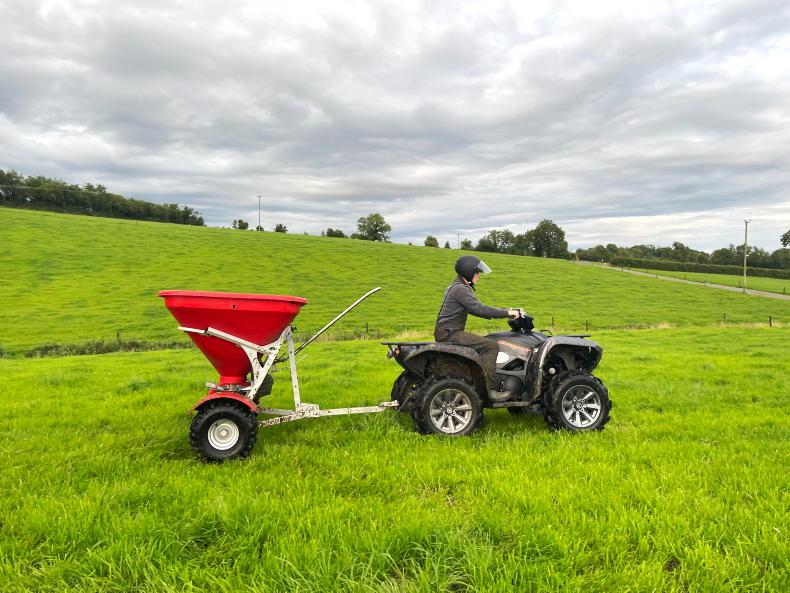
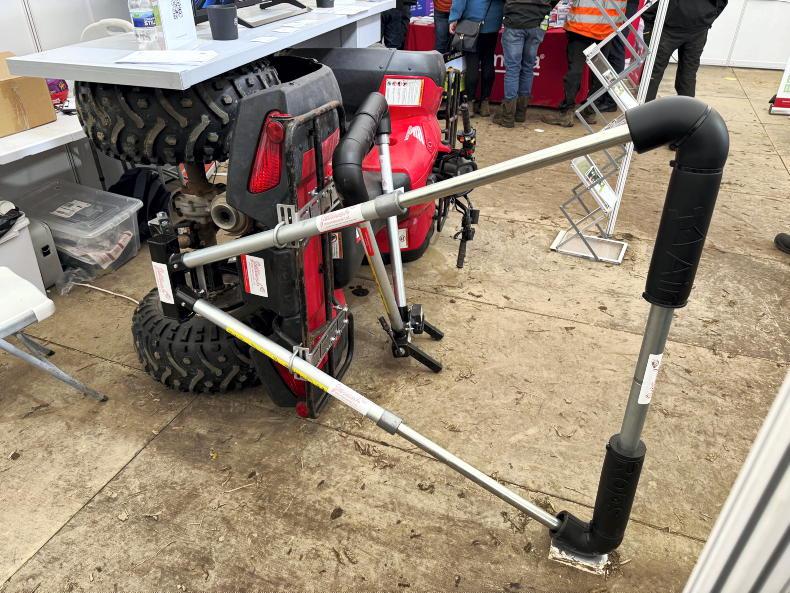

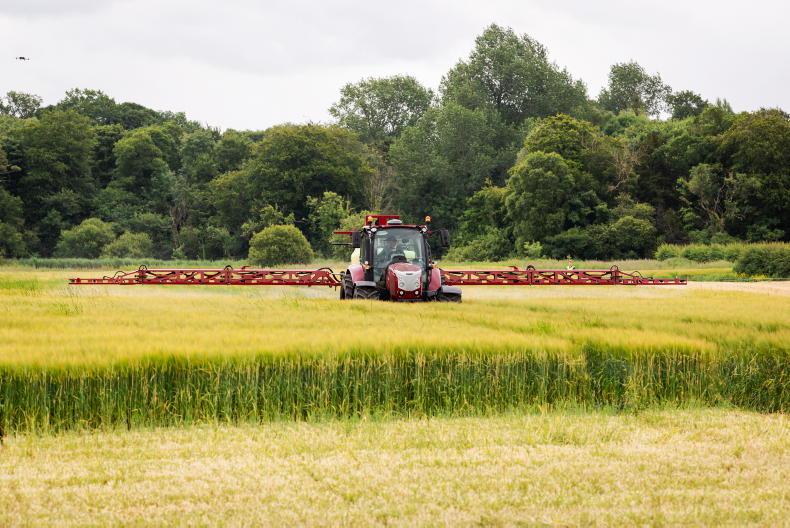
SHARING OPTIONS